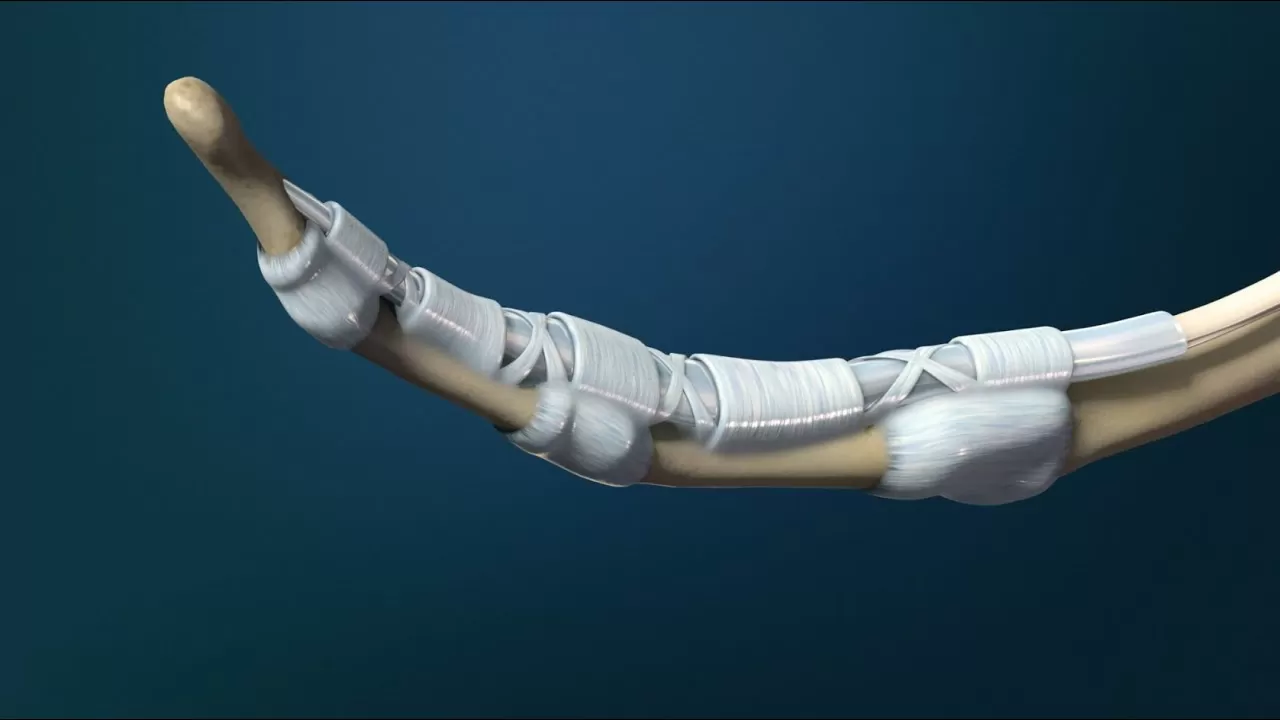Visit our website to learn more about using Nucleus content for patient engagement and content marketing: http://www.nucleushealth.com/ MEDICAL ANIMATION TRANSCRIPT: Your forearms contain flexor muscles that allow you to bend your fingers. Long cord-like structures called tendons connect these muscles to the bones in your fingers and thumb. A tunnel of tissue called a tendon sheath surrounds each tendon. This allows the tendon to glide smoothly as the fingers move. The sheath is held in place by bands of tissue called pulleys. They hold the tendon close to the bone for optimal functioning of the tendon. When your flexor muscles contract, the pulleys help guide the tendons to flex or bend your fingers. Normally, the tendons glide smoothly through the pulleys when the fingers flex and extend. Trigger finger also known as trigger thumb or stenosing tenosynovitis is a condition where the pulley at the base of your finger becomes inflamed and swollen. This makes it harder for the tendon to move through the pulley. Over time, the tendon may also swell and form a bump near the pulley. When you bend your finger, the swollen area on the tendon may cause a catching or triggering sensation as it initially gets hung on the pulley and then slips underneath. If not treated, the tendon may swell enough that it cannot pass beneath the pulley. As a result, your finger may get stuck in a bent position. If you have trigger finger, you may have one or more of the following symptoms, a tender lump on your palm at the base of your finger, a catching, popping or locking sensation when you move your finger and pain when you bend or straighten your finger. The cause of trigger finger isn't known but some conditions that can increase your risk for it include diabetes, rheumatoid arthritis, gout, and repeated injuries. Forceful and repetitive hand gripping may also increase your risk. To treat mild trigger finger, your doctor may advise you to rest your hand and avoid activities that make it worse. Your doctor may prescribe anti-inflammatory medication or a corticosteroid injection to reduce the swelling. You may also need to wear a finger splint to keep your fingers straight. If nonsurgical treatments haven't worked, your doctor may advise you to have a surgical procedure. To start the procedure, your surgeon will make a small incision in your palm. Then the pulley will be cut to free the tendon. At the end of the procedure, your incision may be closed with stitches and covered with a soft bandage. To find out more about trigger finger, talk to your healthcare provider. #triggerfinger #triggerthumb #fingerpain ANH19223
- 7 views

